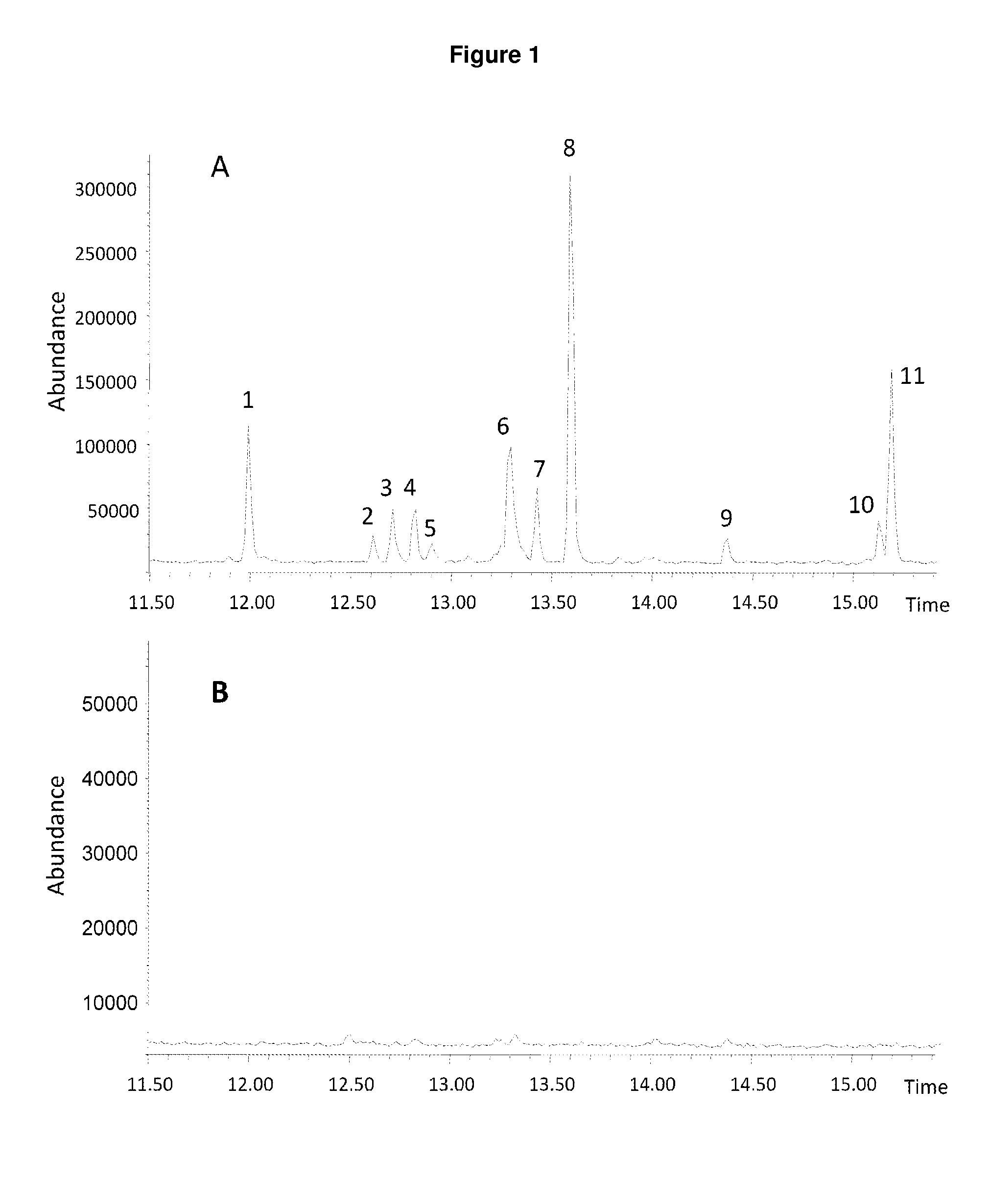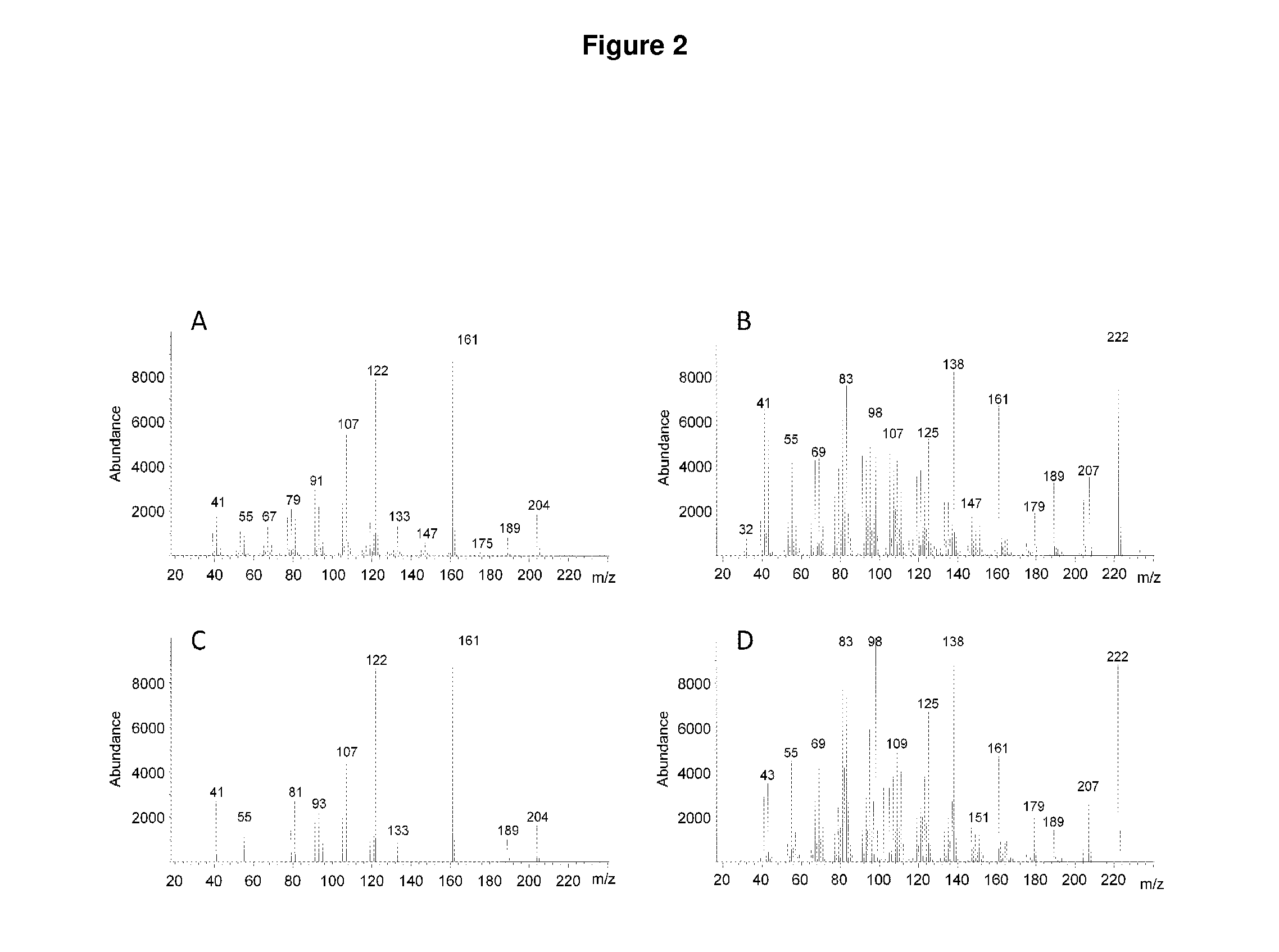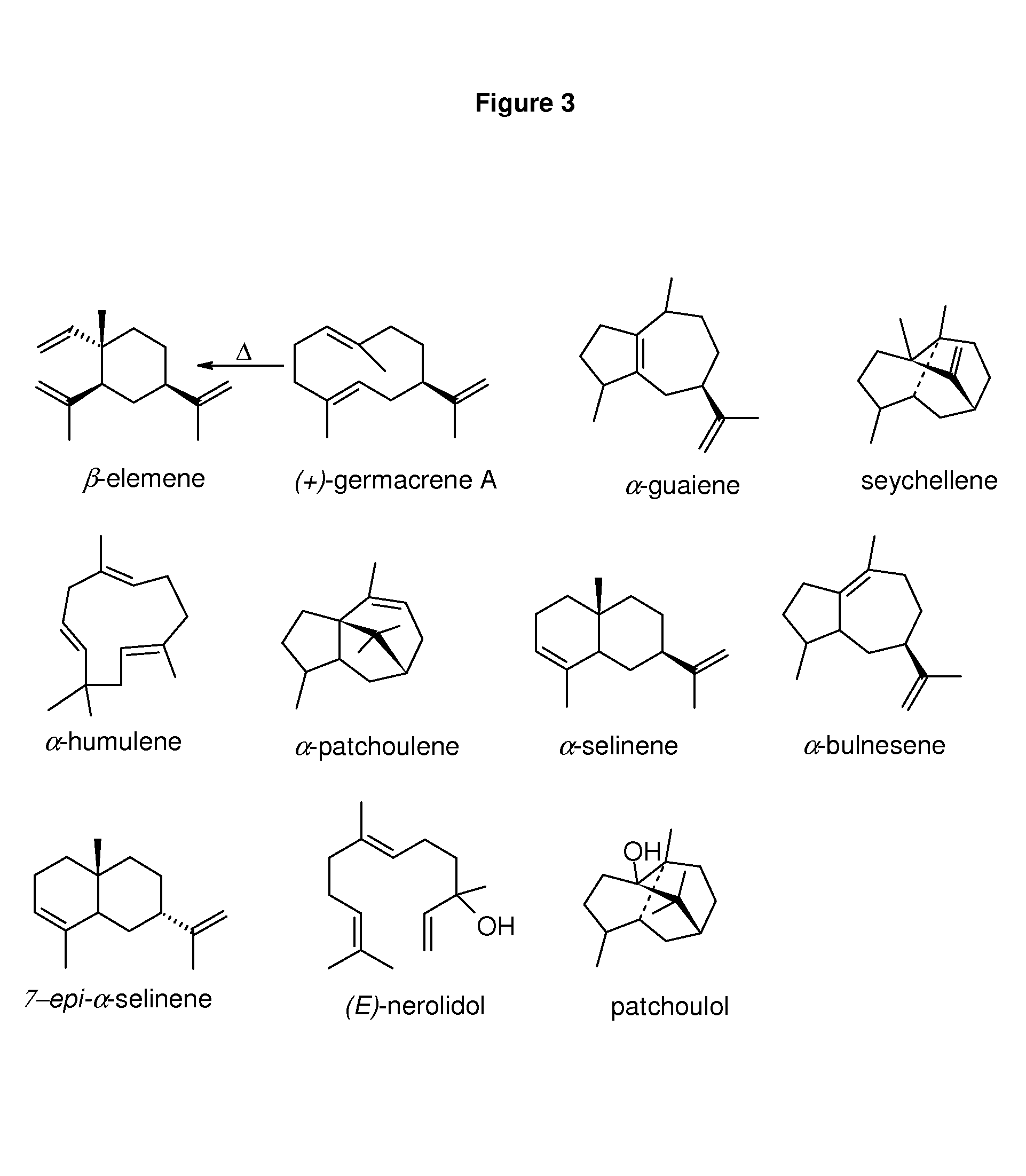Method for producing patchoulol and 7-epi-alpha-selinene
a technology of patchoulol and alpha-selinene, which is applied in the direction of lyase, carbon-oxygen lyase, enzymology, etc., can solve the problems of inability to purify these individual constituents from oil at large scale, difficult or even impossible to use such ingredients in high-quality perfumery, and inability to achieve cost-effective chemical synthesis of such compounds
- Summary
- Abstract
- Description
- Claims
- Application Information
AI Technical Summary
Benefits of technology
Problems solved by technology
Method used
Image
Examples
example 1
Isolation of A Sesquitepene Synthase Cdna from Valeriana Jatamansi Roots
[0127]Valeriana jatamansi (synonym: Valeriana walichii) plants were obtained from B & T World Seeds (Paguignan, Aigues-Vives, France). The plants were cultivated in a green house at minimal temperature of 14° C. Rhizomes, young and mature roots were collected separately and immediately frozen in liquid nitrogen. The material was crushed and grinded to a fine powder in liquid nitrogen using a mortar and pestle. Total RNA was extracted using the CONCERT™ Plant RNA Reagent from Invitrogen following the manufacturer instruction except for the isopropanol precipitation which was replaced by a 2M LiCl precipitation. The quality of the RNA was evaluated on an agarose gel by verifying the integrity of the ribosomal RNA bands. The mRNA was purified from the total RNA by oligodT-cellulose affinity chromatography using the FASTTRACK® 2.0 mRNA isolation Kit (Invitrogen) following the manufacturer's instructions.
[0128]Degene...
example 2
Heterologous Expression and Characterization of ValR20 as a 7-epi-α-selinene and Patchoulol Synthase
[0132]Two oligonucleotides, Val-R20-topo-start (SEQ ID NO:11) and Val-R20-stop (SEQ ID NO:12), where designed from the start and stop regions of ValR20 and used to amplify the full-length sequence of this cDNA. The Val-R20-topo-start was designed according to the CHAMPION™ pET Directional TOPO® Expression Kits (invitrogen). The amplification was performed with the Pfu DNA polymerase (Promega) from the 5′-RACE-Ready cDNA pool prepared with the Smart RACE cDNA amplification kit (clontech). The thermal cycling conditions were as follows: 2 min at 95° C.; 32 cycles of 5 sec at 94° C., 20 sec at 53° C. and 3 min at 72° C. The PCR products were purified on an agarose gel and eluted using the QIAQUICK® Gel Extraction Kit (Qiagen, Valencia, Calif.). The PCR product was ligated into the pET101 plasmid following the manufacturer protocol (Invitrogen). The constructs were verified by DNA sequenc...
PUM
| Property | Measurement | Unit |
|---|---|---|
| optimal temperature | aaaaa | aaaaa |
| optimal temperature | aaaaa | aaaaa |
| optimal temperature | aaaaa | aaaaa |
Abstract
Description
Claims
Application Information
 Login to View More
Login to View More - R&D
- Intellectual Property
- Life Sciences
- Materials
- Tech Scout
- Unparalleled Data Quality
- Higher Quality Content
- 60% Fewer Hallucinations
Browse by: Latest US Patents, China's latest patents, Technical Efficacy Thesaurus, Application Domain, Technology Topic, Popular Technical Reports.
© 2025 PatSnap. All rights reserved.Legal|Privacy policy|Modern Slavery Act Transparency Statement|Sitemap|About US| Contact US: help@patsnap.com



